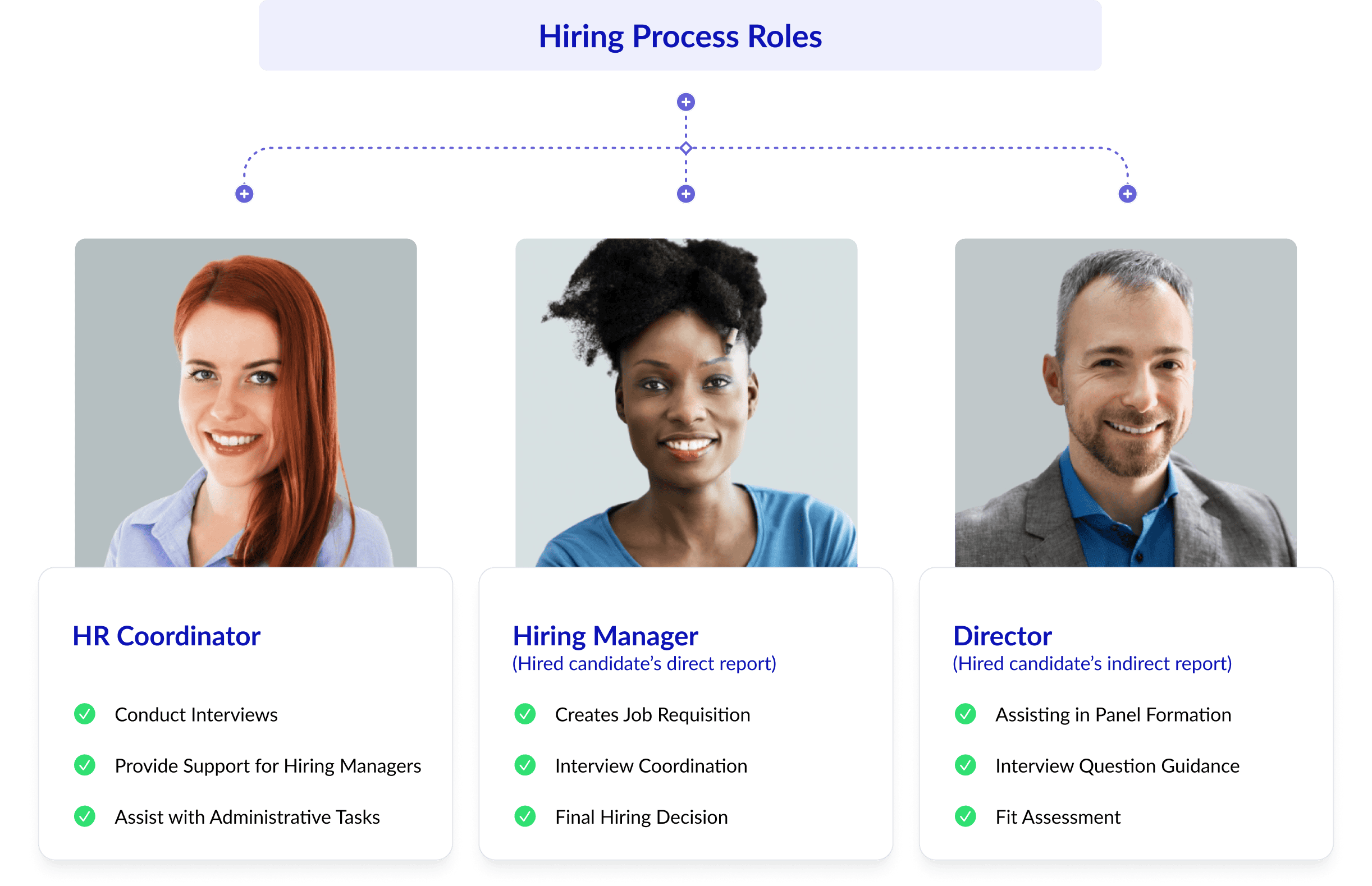
Who Are Hiring Managers?
Explore the role hiring managers play in successful recruiting. Learn who they are and what they do.

What is a direct report and how does their role fit in a business? Keep reading to learn about what a direct report is, and how they interact with management inside of an organization to keep operations running smoothly.
A direct report (or a subordinate) is an employee whose role is directly below that of another employee. An employee who has a direct report could be a manager, supervisor, director, or in another leadership or managerial role. They are generally responsible for overseeing their direct report's workload, priorities, and performance.

What tasks does a direct report take on, and how do they fit into the overall organizational structure with their managers? This is a breakdown between these different team members and how they contribute to the workforce.
How Managers Interact With Direct Reports
Responsibilities managers may have when managing their direct reports:
How Direct Reports Interact With Managers
Key responsibilities that direct reports have include:

A manager’s direct report is someone they communicate with and manage directly. In contrast, an indirect report isn’t directly supervised by that manager but is still their responsibility in some capacity. They’re typically two or more tiers below the manager’s position in the organizational hierarchy.
Employees in senior leadership roles, such as directors, generally have indirect reports. For example, a director’s direct reports may be managers who have their own direct reports (employees). In this case, the direct report (employee) of their direct report (manager) would be an indirect report of the director.

As an example, this is what the structure may look like inside an organization for the CMO, including the different types of team members who report to them.
Director of Digital Marketing
Manages online marketing, including SEO, PPC, and social media.
Indirect Reports: SEO specialists, social media managers, PPC analysts
Director of Branding and Communications
Responsible for brand messaging, PR, and internal communications.
Indirect Reports: PR managers, communication specialists, copywriters
Director of Product Marketing
Manages marketing strategies for specific products or lines.
Indirect Reports: Product marketing managers, market researchers
When a company grows or requires a new employee, the new hire’s manager, namely the hiring manager, is usually involved in many steps of the hiring process. For example, a manager could be in charge of sourcing tasks, such as identifying the qualifications for a direct report and collecting the necessary information to develop job descriptions and interview guides. Hiring managers usually play a key role in the interview process. They work with HR to conduct interviews, and often make the final hiring decision.
Indirect managers such as the hiring manager’s manager are also often included in the hiring process, helping hiring managers with tasks such as suggesting interview panel members and appropriate interview questions.
During the interview, a hiring manager typically focuses on assessing a candidate’s core competencies. An indirect manager, such as a director, might be less knowledgeable about the day-to-day tasks of the role. Therefore, they would be assessing their potential indirect report’s overall fit in the organization.

Here are some best practices to ensure a strong relationship with direct reports:
Establish an environment where team members feel encouraged to express their thoughts and ideas. This leads to a sense of community and empowers employees to work together as a team.
Treat others the way you’d like to be treated. Make everyone feel included, respected and represented by using inclusive language and by creating an approachable environment, encouraging direct reports to let you know if they need advice or assistance.
Don’t leave any employee in the dark about what they need to do to fulfill their role. When managers are transparent about what they expect, team members can quickly and confidently move toward meeting those targets.
Once expectations are set, managers should give their direct reports insights into their progress. Performance reviews provide an opportunity to give regular feedback that helps team members grow and adapt.
There’s a place for necessary guidance and oversight, but direct reports should have some freedom and ownership over their tasks. This balance between autonomy and accountability can result in higher team morale and job satisfaction.
In fact, a study of over 5,000 knowledge workers done by Harvard Business Review shows that 59% of respondents say “flexibility” is more important to them than salary or other benefits a company may provide.
Effective leaders must be able to take feedback and act on it. Teams should have an avenue for providing constructive criticism to their managers. This willingness to learn and change can create a culture of respect.

An organization's success requires empowered employees and skilled leadership. That starts with building the right relationships between management and their team members. Now that you have the information you need about managers and subordinates, infuse it into your company to create positive change.
Managers directly communicate with and manage the workflows of their direct reports. Indirect reports are not directly managed but still fall under the manager’s responsibility and are typically several levels below in the organizational hierarchy.
The number of direct reports refers to the employees a manager directly oversees and communicates with. It indicates the size of the team directly under the manager’s supervision, affecting workload, management style, and organizational structure.
In a modern workplace, a manager can have no direct reports. In such cases, they may focus on strategic planning, project management, or advisory roles rather than supervising employees directly, depending on the organization's structure and their specific responsibilities.

E-BOOK
The Modern Guide to Structured Interviewing
Get your free copy of VidCruiter’s comprehensive white paper about structured interviewing. This practical guide:
By providing email address, you agree to receive
updates from VidCruiter.
Read our
Privacy Policy
Modernize your hiring process with expert insights and advice.